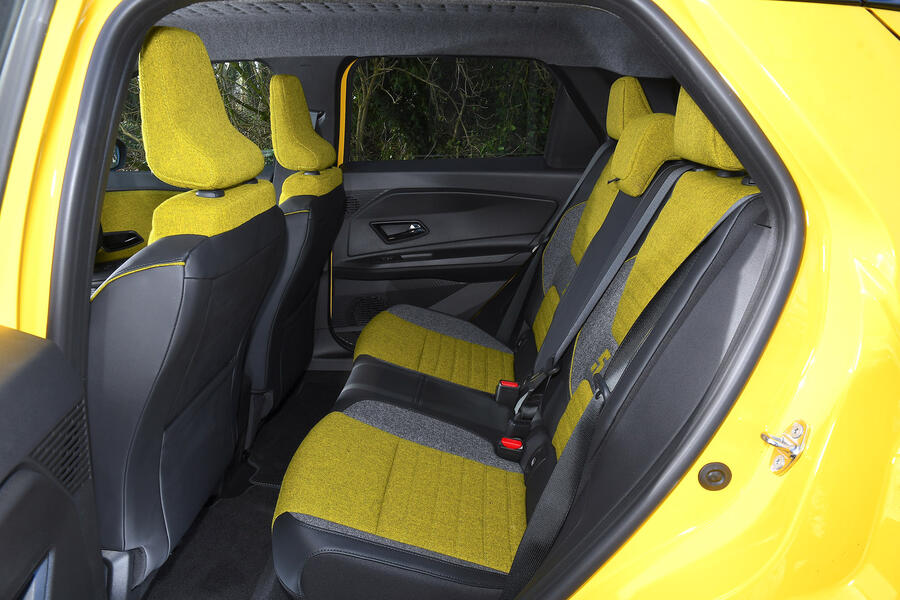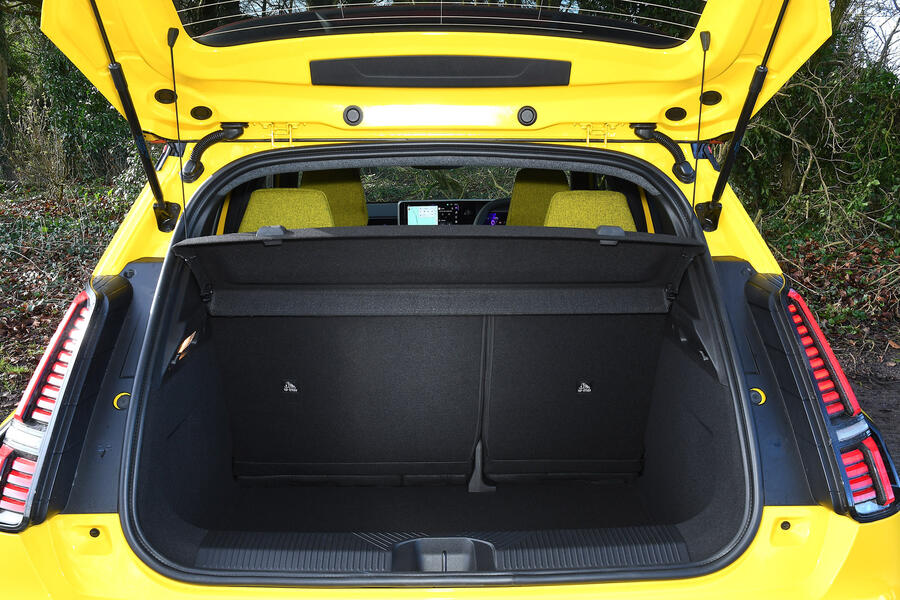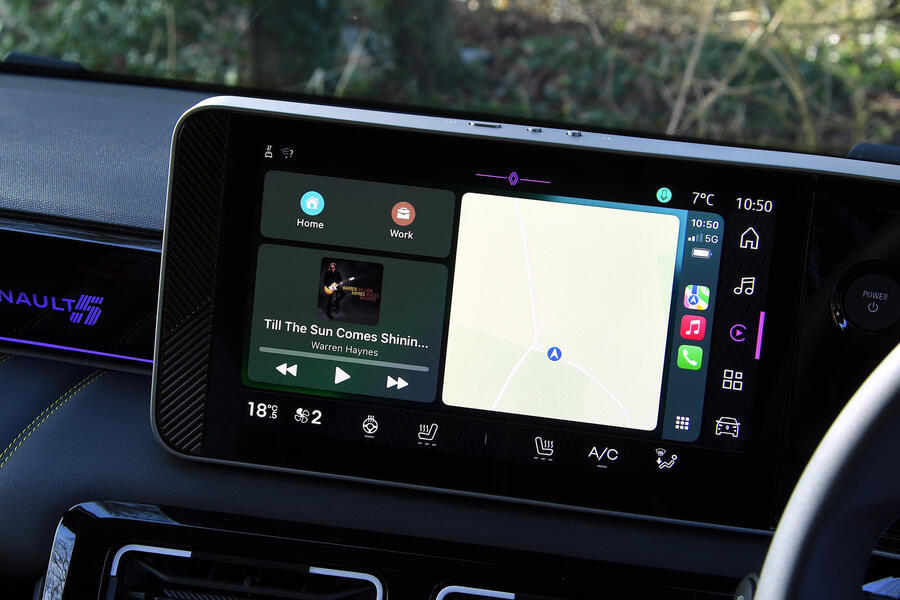Anyway, all this adds up to a great driving environment, and the final piece of this puzzle is present and correct too: the 5 has a nicely resolved driving position. Past Renaults often suffered from a shortness of leg room and thigh support, but that’s not the case in the 5. Although the seats don’t have cushion angle adjustment, their default position is semi-recumbent. This supports taller drivers’ legs very well but may be less comfortable for shorter drivers. The steering column offers plenty of manual adjustment too.

Rear seats
The 5 is unapologetically a small car. At 3922mm, it is shorter than a Clio (4053mm), and despite small overhangs, the 5’s wheelbase is shorter than the Clio’s as well.
As a result, passenger space is inevitably limited. Accessing the rear seats is easier than in the Mini Cooper E thanks to the rear doors, but once in, occupants won’t have a great deal more leg room. The 610mm on offer is about midway between the Fiat 500e (530mm) and the Mini Aceman (710mm). While tall adults won’t be comfortable in the back of a 5, children should be fine.
Thanks to relatively large windows, the rear seat area is at least quite airy. Although there’s no option of a glass roof and the headliner is a dark grey, the latter has an unusual waffle texture, lending some visual interest. There’s little in the way of amenities. A centre armrest, climate vents and USB charge ports are all absent.

Boot
Given its small exterior dimensions, the 5 finds a reasonable balance when it comes to practicality. It hasn’t sacrificed boot space for more rear leg room and leaves 277 litres, with a further 27-litre compartment under the floor that’s ideal for a set of cables.
That’s more than the Mini Cooper E’s 210 litres but less than the Peugeot e-208’s 311 litres. We would have liked to see a variable-height boot floor like in the Mini, given that the Renault’s loading lip is quite high and folding down the rear seats leaves a big step. With the drive motor and power electronics at the front, there is no space for a front luggage compartment.

Multimedia
The 5’s OpenR Link infotainment system is based on Google’s Android Automotive and is fundamentally the same as you will find in the Megane, Austral and most other recent Renaults. The difference is that in the 5 it lives on a slightly smaller, 10.1in screen. This means that the interface is more squeezed and, as such, not quite as easy to use.
By and large, however, Renault’s system is one of the better ones out there. It responds quickly, important functions can be accessed with big virtual buttons and the menu structures are fairly simple. Unlike the interface on Minis, it doesn’t sacrifice clarity for gimmicky graphics, either.
Renault touts its Google connection more clearly than Porsche (which uses the same Android Automotive foundations in the Macan Electric), and you can log in with a Google account. This means that if you’ve searched for a destination in Google Maps on your phone, it will appear in the recent destinations in the car’s navigation system (which is simply Google Maps). That’s very handy, as is Google’s traffic information and route planning.

The charge planner in pricier models (which plots your route via rapid chargers if your destination is out of range) is very good too: it has up-to-date information about chargers and lets you easily swap in alternative chargers if you don’t like the ones the software has suggested.
One annoyance with Google Maps is that it insists on asking you about road conditions: whether there’s still a car stopped on the hard shoulder, or whether there’s police around. It does this with a prominent dialog box that blocks more useful information like the remaining time and distance until you press on it. It’s distracting and can’t be turned off.
Apple CarPlay and Android Auto are both wireless, quite reliable and integrate well with the car’s native interface.

